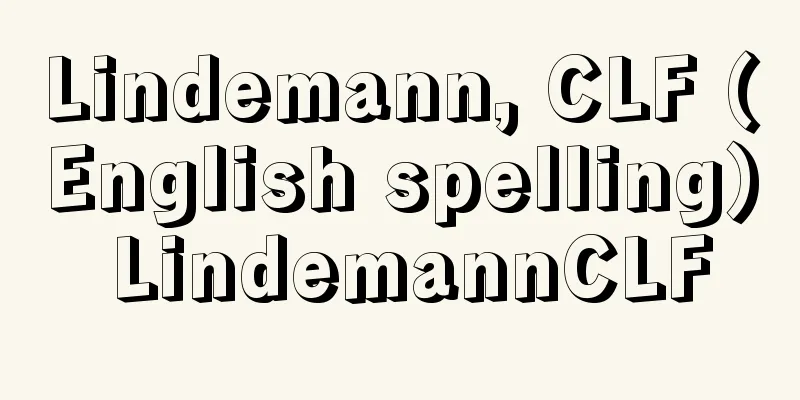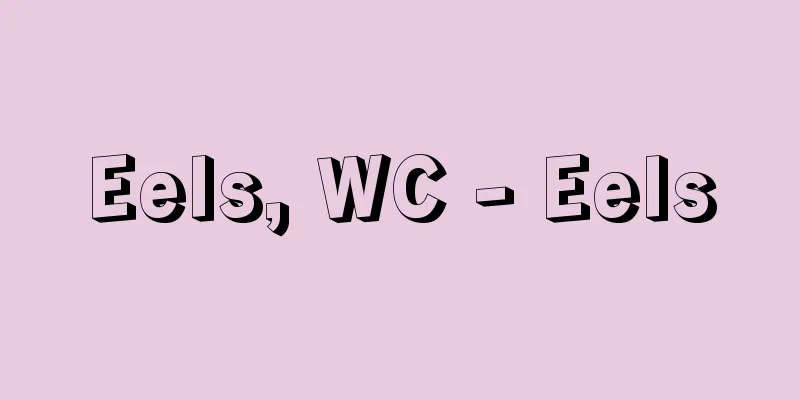Lindemann, CLF (English spelling) LindemannCLF

|
...With the development of electronic computers, it is now easy to calculate numbers with more than one million digits. In 1761, JH Lambert proved that π is an irrational number, and in 1882, CLF Lindemann proved that π is a transcendental number, that is, a number that cannot be the root of an algebraic equation with integer coefficients. [Minoru Nakaoka] From [Impossible to Draw Problem]...After centuries of futile attempts to find a solution, it was not until the 19th century that it was proven that the above three constructions were impossible using a finite number of ruler and compass constructions. In other words, it was recognized that construction using a ruler and compass is only possible when the numbers representing the lengths of the line segments that determine the desired figure can be obtained from the numbers representing the line segments that determine the given figure by addition, subtraction, multiplication, division, and square root. Based on this, in 1837 P. Wantzel (1814-48) proved that, for example, the equation x 3 -3 x -1 = 0 that appears in the problem of dividing a 60° angle into three equal parts, and the equation x 3 = 2 that appears in the problem of doubling a cube, cannot be solved by addition, subtraction, multiplication, division, and square root alone. Furthermore, when CL F Lindemann (1852-1939) proved in 1882 that pi, which is necessary to solve the problem of squaring a circle, is a transcendental number, the three great Greek problems were negatively solved. It is also impossible to construct a regular heptagon using only a ruler and compass. From [Transcendental Numbers]...However, even today, determining whether a specific number is a transcendental number remains an extremely difficult problem. In 1873, C. Hermite showed that e is a transcendental number, and in 1882, C.L. Lindemann showed that π is a transcendental number. This led to increased interest in transcendental numbers, and in 1900, D. Hilbert presented 23 problems at the International Congress of Mathematicians in Paris, the seventh of which was the following problem on transcendental numbers. ... *Some of the terminology references "Lindemann, CLF" are listed below. Source | Heibonsha World Encyclopedia 2nd Edition | Information |
|
…現在では電子計算機の発達により100万桁以上でも容易に求められるようになった。πが無理数であることは1761年ランバートJ.H.Lambertにより証明されたが,さらに,1882年リンデマンC.L.F.Lindemannはπが超越数,すなわち整数を係数とする代数方程式の根とならない数であることを証明した。【中岡 稔】 【作図不能問題】より…その後も何世紀にもわたっていたずらに解法が探されたのであるが,やっと19世紀になって,定規とコンパスを有限回用いる作図法では上の三つの作図は不可能であることが証明されたのである。すなわち,定規とコンパスによる作図が可能であるのは,求める図形をきめる線分の長さを表す数が,与えられた図形をきめる線分を表す数から加減乗除と開平で得られるときに限るということが認識され,このことから,例えば60゜の3等分問題に現れる方程式x3-3x-1=0も,立方体倍積問題に現れる方程式x3=2も加減乗除と開平だけでは解きえないことが,1837年ワンツェルP.Wantzel(1814‐48)によって証明され,また,円積問題を解くのに必要な円周率πは超越数であることが82年にリンデマンC.L.F.Lindemann(1852‐1939)によって証明されるに及んで,ギリシアの三大問題は否定的解決をみたのである。なお,正七角形の作図も定規とコンパスだけでは不可能である。… 【超越数】より…しかしながら,具体的に与えられた数が超越数であるかどうかを判定することは今日でもきわめて困難な問題である。1873年,C.エルミートはeが超越数であることを示し,82年,リンデマンC.L.F.Lindemannはπが超越数であることを示した。これによって超越数への関心が高まり,1900年,D.ヒルベルトはパリの国際数学者会議で23の問題を提出したが,そのうちの7番目で次のような超越数の問題をあげている。… ※「Lindemann,C.L.F.」について言及している用語解説の一部を掲載しています。 出典|株式会社平凡社世界大百科事典 第2版について | 情報 |
Recommend
"Name of the initiation history" - Kanjorekimei
…Kongobu-ji Temple [Wada Hidenori] [The Book of K...
Hebei [Province] - Kahoku
A province in northern China. Facing the Bohai Bay...
Misono
From ancient times to the Middle Ages, this was a ...
One Sei - One
...A term used in Noh, Kyogen, and Kabuki music. ...
The Siebold Incident
In the late Edo period, the German doctor Siebold...
Official management - Kansho
〘Noun〙① A subordinate of the Daijokan who performs...
Athaliah
…Therefore, the southern kingdom of Judah never e...
Konstantinos Manasses (English spelling)
… [Philologie] The Greek classics were the subjec...
Nickel - Nickel (English spelling)
It belongs to group 10 of the periodic table and ...
VTOL - Vitol
Vertical takeoff and landing aircraft (1962) Sourc...
Samuil (English spelling)
?-1014 Emperor of the First Bulgarian Empire. Reig...
Propamine
...A typical drug that stimulates the central ner...
Tachyphylaxis
Also known as quick habit formation. Unlike drug t...
Akakagotake - Akakagotake
…A mushroom of the family Acanthaceae in the orde...
Landing gear
The part that acts as the legs of an aircraft when...


![Philip [II] - Philip](/upload/images/67ccaaf96375c.webp)






